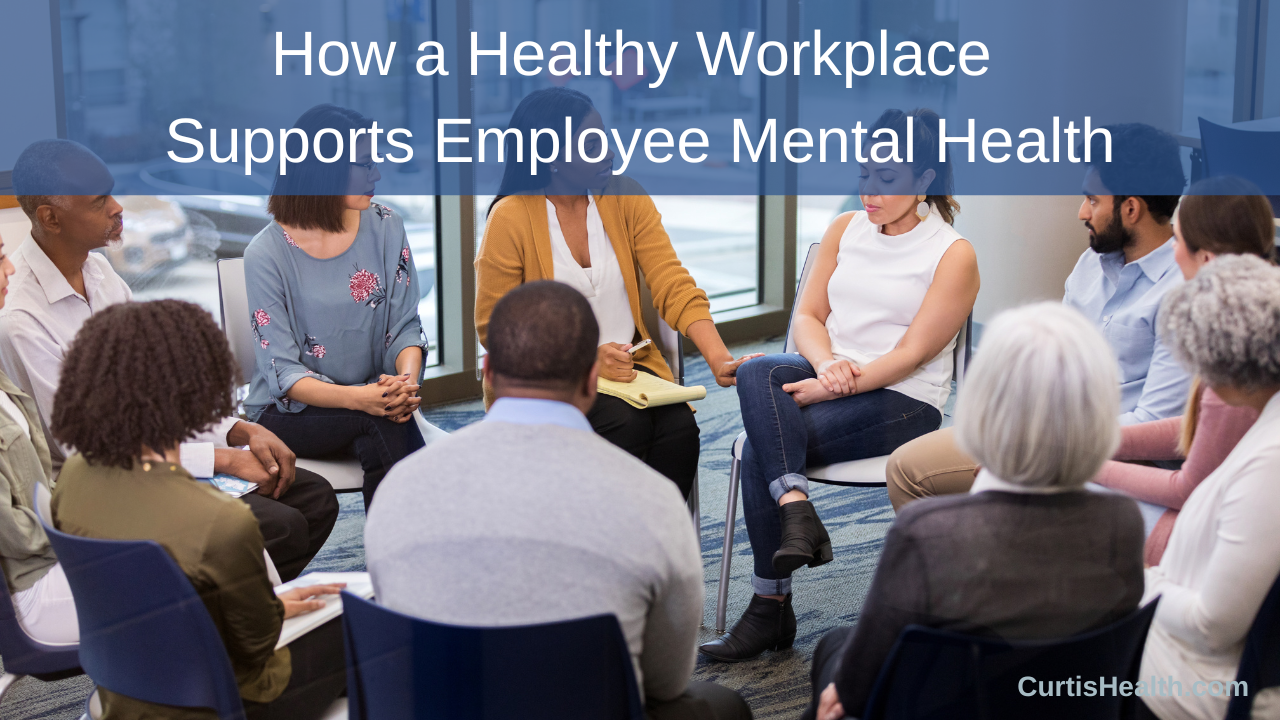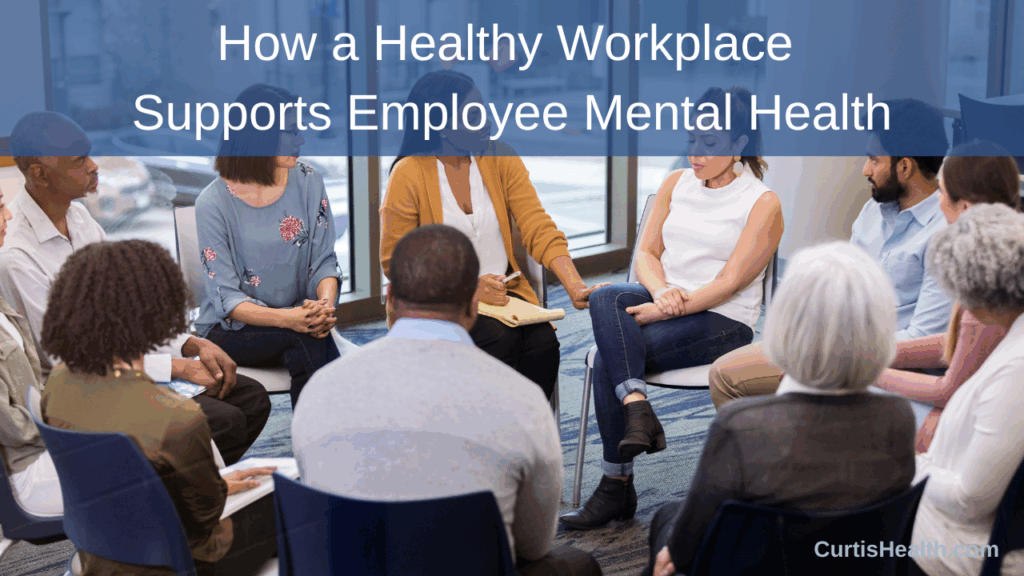This Healthy Workplace Month, as we talk about fitness challenges and healthy eating, it’s crucial to acknowledge the most significant—and often invisible—component of employee well-being: mental health. The modern workplace, with its constant demands, digital connectivity, and pressure to perform, has created a silent challenge that affects a vast number of employees. Toxic burnout culture, chronic stress, and feelings of isolation are not just individual problems; they are systemic issues that demand a strategic, company-wide response.
At Curtis Health, we believe that a truly effective workplace wellness program is a primary defense line for mental well-being. It’s not just about managing symptoms after a crisis; it’s about building a culture of resilience, connection, and psychological safety. This month, let’s explore how holistic wellness initiatives can serve as powerful tools to proactively support and protect your team’s mental health.
Shifting from Reactive to Proactive Support
For years, the standard approach to mental health in the workplace has been reactive. Employee Assistance Programs (EAPs) and crisis hotlines are vital resources, but they often act as a safety net—offering help only after an employee is in distress.
A modern workplace wellness program takes a proactive stance. It is designed to equip employees with the tools, skills, and support systems they need to manage stress, build emotional resilience, and maintain a healthy mindset before they reach a breaking point. This is the difference between treating an illness and promoting wellness.
The Integrated Approach: A Holistic Framework
Mental health is not a separate silo; it’s deeply intertwined with physical, emotional, and social well-being. A comprehensive wellness program recognizes this by integrating mental health support into every facet of its offerings.
1. The Mind-Body Connection: The Role of Physical Activity
The link between physical activity and mental health is undeniable. Regular movement—whether it’s a vigorous workout or a simple walk—releases endorphins, reduces stress hormones, and improves sleep quality. Our programs encourage physical activity not just for a healthy body, but for a clear mind. A company-wide walking challenge, for instance, isn’t just about steps; it’s about encouraging people to step away from their desks, get fresh air, and engage in an activity known to reduce anxiety and boost mood.
2. Building Skills for Stress Management
Many employees face stress daily but lack the practical tools to manage it. A wellness program provides these tools. Workshops on mindfulness, guided meditation sessions, and breathing exercises give employees simple, actionable techniques to use in real-time. These aren’t just one-off events; they are part of a continuous learning journey that empowers individuals to take control of their emotional state and foster a greater sense of calm and focus.
3. Fostering Social Connection to Combat Isolation
In an increasingly remote and hybrid work world, isolation can be a significant contributor to mental distress. A wellness program can be the antidote. By organizing social activities—whether it’s an in-person walking club, a virtual coffee break, or a team challenge—you create opportunities for meaningful connection. These social bonds build a sense of belonging and a support network, which are fundamental pillars of mental resilience and psychological safety. When employees feel connected and supported by their peers, they are more likely to seek help and feel comfortable sharing their struggles.
The Crucial Role of Leadership and Culture
Even the best wellness tools are useless without a supportive culture. This is where leadership is paramount. When managers and executives openly talk about mental health, take “mental health days,” and participate in wellness activities, it sends a powerful message: it’s not just okay to prioritize your well-being, it’s expected. A culture that respects boundaries, encourages taking breaks, and values outcomes over hours is one of the most effective forms of mental health support a company can provide.
Making it Happen This Month
Healthy Workplace Month is the ideal time to re-evaluate your approach to mental health. It’s an opportunity to shift the conversation from a once-a-year topic to a core, year-round commitment.
- Start a dialogue: Use this month to openly discuss mental health. Bring in an expert speaker, share educational resources, and destigmatize the conversation.
- Launch a proactive initiative: Introduce a new program focused on stress management or mindfulness. Provide a pilot group with tools and track their feedback.
- Lead by example: Encourage your leadership team to model healthy behaviors. A simple act, like a senior manager sharing a story about their favourite stress-reduction technique, can have a profound impact.
Your employees are your most valuable asset. Their mental health is not a secondary concern; it is the foundation of their creativity, productivity, and happiness. By investing in a holistic wellness program that prioritizes mental well-being, you’re not just creating a healthier workforce—you’re building a more compassionate, resilient, and thriving organization. Contact us today to learn how we can help.




